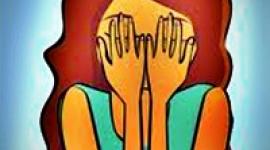Sexual Desire Disorder
Definition
Inhibited sexual desire (ISD) refers to a low level of sexual desire and interest manifested by a failure to initiate or be responsive to a partner's initiation of sexual activity. ISD may be a primary condition (where the person has never felt much sexual desire or interest), or secondary (where the person used to possess sexual desire, but no longer has interest).
ISD may also be either situational to the partner (where he/she has interest in other persons, but not toward the partner), or it may be general (where he/she has a lack of sexual interest in anyone).
A diagnosis of Hypoactive Sexual Desire Disorder refers to a condition in which an individual has very low desire for sex although sexual performance may be adequate once the activity has been initiated. This disorder occurs in approximately 20% of the population and occurs in both sexes though more commonly in women.
A diagnosis of Sexual Aversion Disorder refers to a condition in which an individual is repelled by the concept of genital sexual contact. This disorder probably occurs less frequently than Hypoactive Sexual Desire.
Symptoms
Lack of sexual interest.
Causes
-
Lack of affection not associated with continuing into sexual intercourse
-
Power struggles
-
A very restrictive upbringing concerning sex, or negative or traumatic sexual experiences
-
Psychological conditions such as depression and excessive stress may inhibit sexual interest
-
Fatigue
-
Individuals who were victims of childhood sexual abuse or rape, and persons whose marriages are lacking in emotional intimacy are particularly at risk
Treatment
The majority of the time, medical evaluation and lab tests will not reveal a physical cause. However, testosterone is the hormone responsible for creating sexual desire in both men and women. It may be useful to check testosterone levels, particularly in men who have ISD. Blood for such lab tests in men should be drawn before 10:00 a.m., when male hormone levels are at their highest. Interviews with a specialist in sex therapy are more likely to reveal possible causes.
Treatment must be individualized to the factors that may be inhibiting sexual interest. Some couples will need relationship enhancement work or marital therapy prior to focusing directly on enhancing sexual activity.
Some couples will need to be taught skills in conflict resolution and be helped to work through differences in nonsexual areas.
Many couples will also need direct focus on the sexual relationship wherein through education and couple assignments they expand the variety and time devoted to sexual activity.
When problems with sexual arousal or performance are factors, these sexual dysfunctions will need to be addressed.
Prevention
One major way of preventing ISD is to reserve time for nonsexual intimacy with one's partner. Couples who reserve weekly talk time and time for a weekly date alone without the kids, will maintain a closer relationship and are more likely to feel sexual interest. Couples should also detach sex and affection, so that neither one is afraid to be affectionate on a daily basis, fearing that it will be interpreted as an invitation to proceed to intercourse.
Reading books or taking courses in couple communication, or reading books about massage may also encourage feelings of closeness. For some individuals, reading novels or viewing movies with romantic or sexual content may also serve to encourage sexual desire.
For too many couples, sex gets what is left over late at night. Regularly reserving "prime time," before exhaustion sets in, for both talking and sexual intimacy will encourage closeness and sexual desire.
When both partners have low sexual desire, the issue of sexual interest level will not be problematic in the relationship. Low sexual desire, however, may be a barometer of the emotional health of the relationship. In other cases where there is an excellent and loving relationship, low sexual desire may cause a partner to repeatedly feel hurt and rejected, leading to eventual feelings of resentment and promoting eventual emotional distance.
Sex is something that, for most couples, either bonds their relationship closer together, or something that becomes a wedge that gradually drives them apart. When one partner is significantly less interested in sex than their companion, and this has become a source of conflict and friction, it is recommended that professional help is needed before the relationship becomes further strained.
APA Reference
Staff, H.
(2021, December 15). Sexual Desire Disorder, HealthyPlace. Retrieved
on 2025, November 27 from https://www.healthyplace.com/sex/female-sexual-dysfunction/sexual-desire-disorder

